After impressive gains by Reform in the England’s May elections can it repeat this success in Scotland? How much of a threat does it present to The SNP?
Sir John Curtice, Professor of politics at the University of Strathclyde, has identified four areas where there appears to be a strong correlation with voting Reform:
- Brexit
- Socio-economic class
- Level of education
- Identity.
If you’re a white working class Leave voter with few or no qualifications, then you’re much more likely to vote Reform in England.
What about if you live in Scotland?
Brexit
In English wards where more than 65% voted Leave in 2016, Reform won on average as much as 45% of the vote. In contrast, in places where a majority backed Remain, only 19% voted for Reform. Let’s look at Brexit in Scotland:
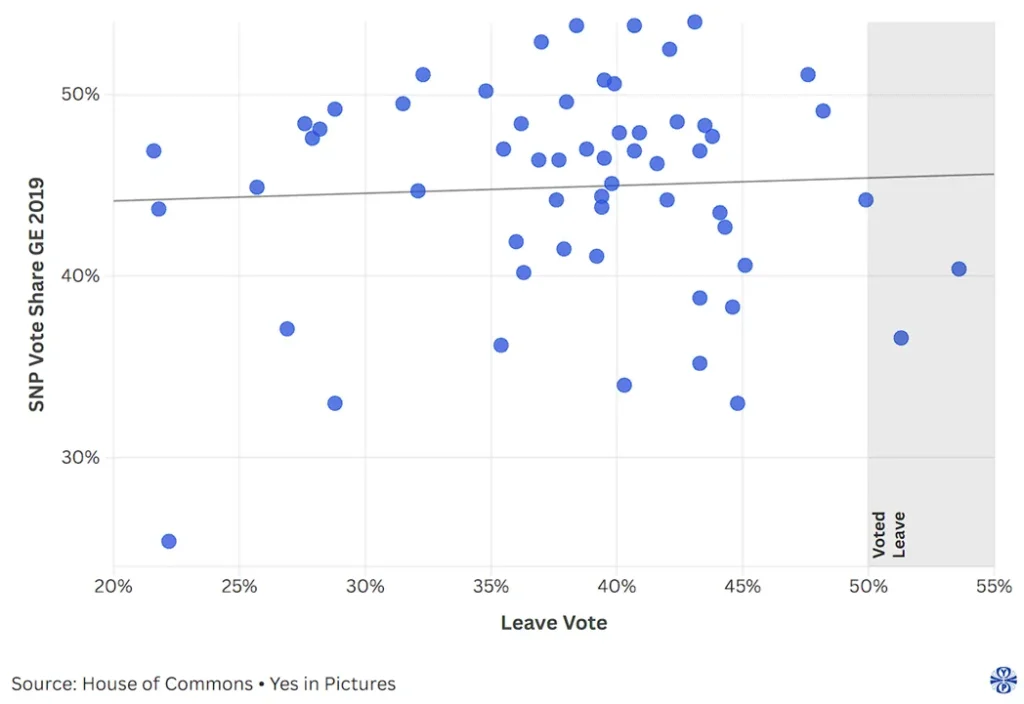
Leave vote vs SNP vote share in the Westminster 2019 Election by Scottish Constituency
(clickable version for more detail)
Here I’ve chosen the Westminster 2019 election to match against the Scottish leave vote. This is because the 2024 election was exceptionally dominated by Labour’s claim that Scotland needed to vote Labour to remove the Tories: all other factors such as policies, performance in office, or the candidate were very much a lower priority.
You can see from the relatively level trend line and well scattered points that there isn’t really any relationship between voting Leave and voting SNP. Brexit is not a factor in Scottish politics. This is because only two of 59 constituencies voted Leave (Banff and Buchan; Caithness, Sutherland and Easter Ross). And even then, only marginally on or below the England average (53.6% and 51.3% Leave vs the England average of 53.4%).
This is not an area in which Reform can obviously gain ground against The SNP – although obviously Scottish Leave voters who currently support pro-Europe Unionist parties may have a new preference for Reform.
Socio-Economic Class
In England’s Council Elections Reform won 39% of the vote in heavily working-class wards but only 19% in the most middle-class ones. How does socio-economic class impact The SNP?
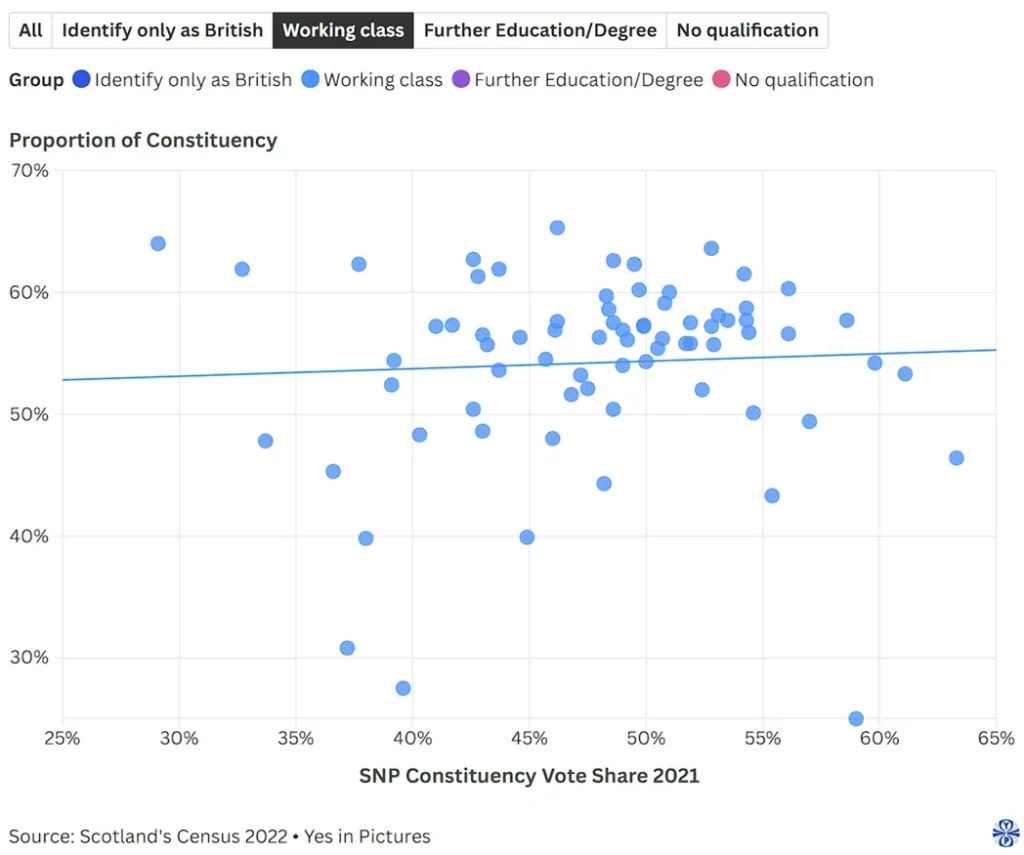
Working class proportion vs SNP Constituency Vote Share in the Holyrood 2021 Election by Constituency
(clickable version for more detail)
Based on the last Holyrood Election there is a slight relationship between the proportion of working class voters and SNP constituency success – but it is not large. The SNP popularity is not strongly related to this factor.
Reform may be able to gain a little ground in some constituencies with higher levels of working class – but this is a very marginal opportunity. Again, this may not be the case for working class voters supporting other parties.
The other consideration for Reform’s approach to the working class is that its messaging is built around criticism of Westminster and Westminster parties, policies, and failures. The SNP includes similar messaging about Westminster – as part of the thrust towards Independence. By itself this is unlikely to attract voters from The SNP.
Education
Support for Reform averaged 43% in English wards where more than half of adults have few, if any, educational qualifications. In contrast, it polled just 19% where more than two in five have a degree. Let’s consider educational attainment in Scotland.
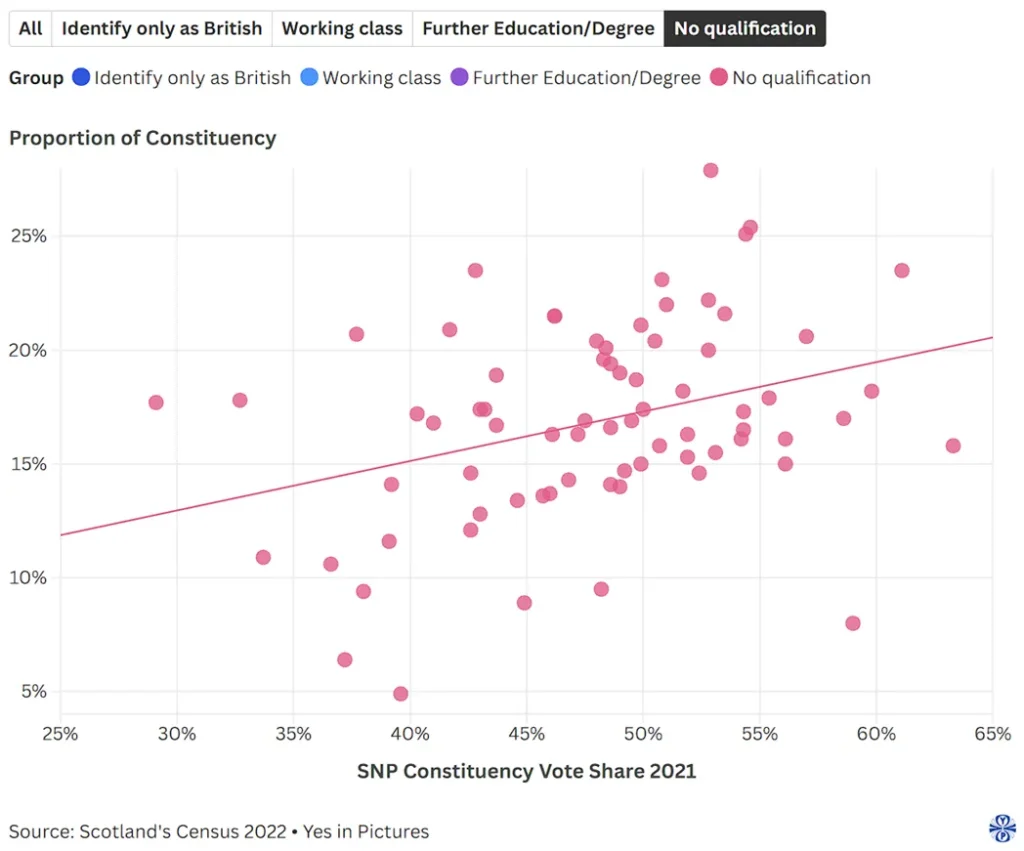
Educational attainment vs SNP Constituency Vote Share in the Holyrood 2021 Election by Constituency
(clickable version for more detail)
There is some relationship between attainment of further education or a degree and SNP vote share. SNP support reduces as the proportion with further education or better increases. Conversely, SNP support increases as the proportion of working-class voters increases.
On its own this suggests an area of weakness for The SNP vs Reform – suggesting Reform may be able to appeal more to working class voters. But hold that thought as we look at the small matter of identity. The areas where Scotland most significantly differs from England.
Identity
Reform only polled 22% in English wards where more than one in five identify as other than ‘white’, compared with a tally of 33% in places where more than 95% told the 2021 Census that they were ‘white’. But identity in Scotland is much more strongly based on nation than colour.
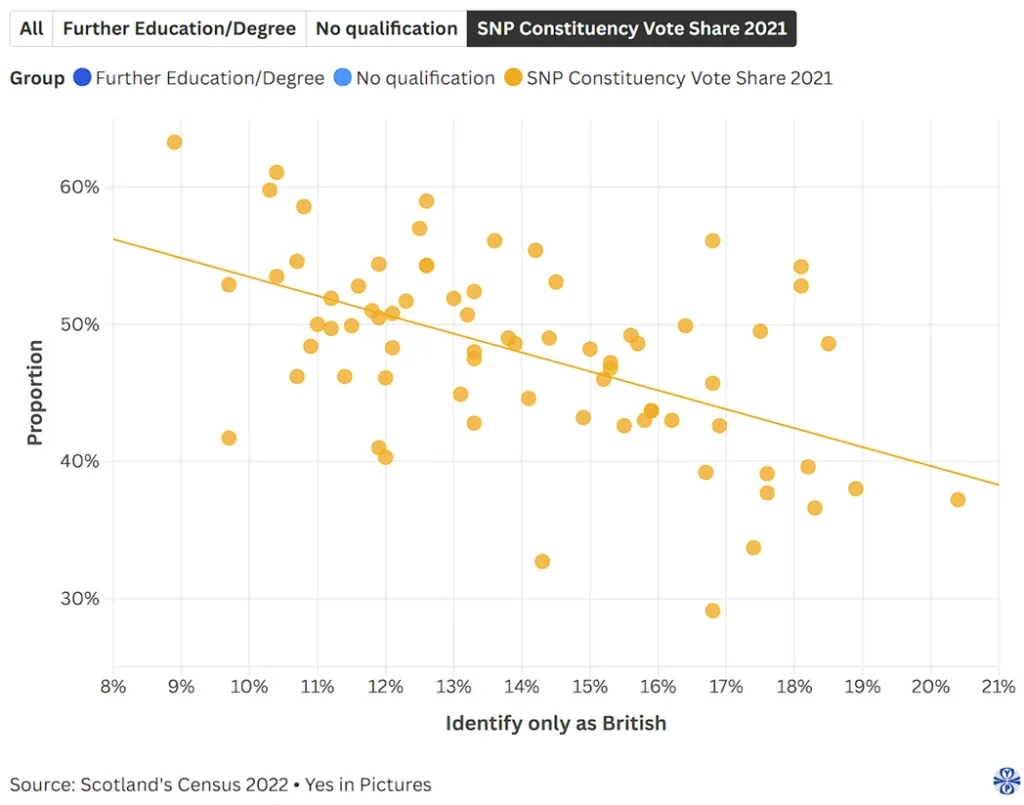
National identity vs SNP Constituency Vote Share in the Holyrood 2021 Election by Constituency
(clickable version for more detail)
It’s clear that as the proportion of voters who identify only as British increases, support for The SNP drops. That’s a lot smaller proportion than identify only as British in England, but its significant. Reform has a very strong message around being “British” – but the population likely to be attracted by this the most is also the group that is least attracted to The SNP already.
So Reform’s “British only” message is likely to increase support for The SNP in a large majority of voters. In percentage terms this looks like a much stronger effect than the socio-economic one considered in the previous section.
So where does this leave The SNP?
Of course, Reform may develop some uniquely Scottish appeal, but based on the message it is promoting in England (and it is still promoting an identical message in Scotland) the impact looks like this:
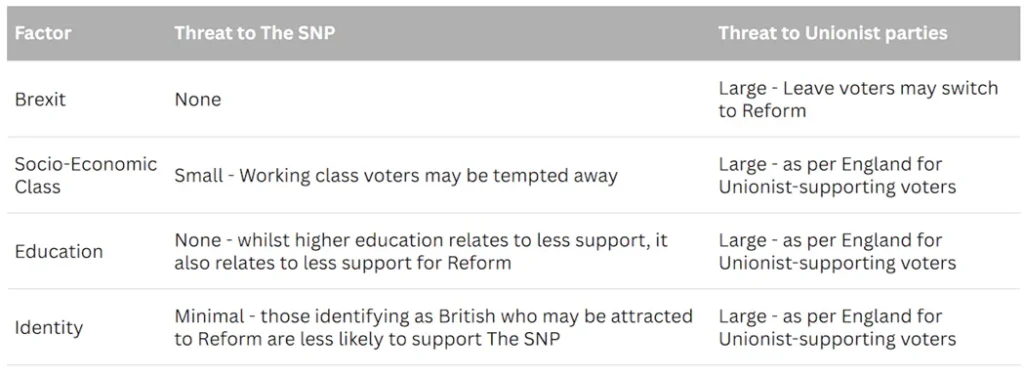
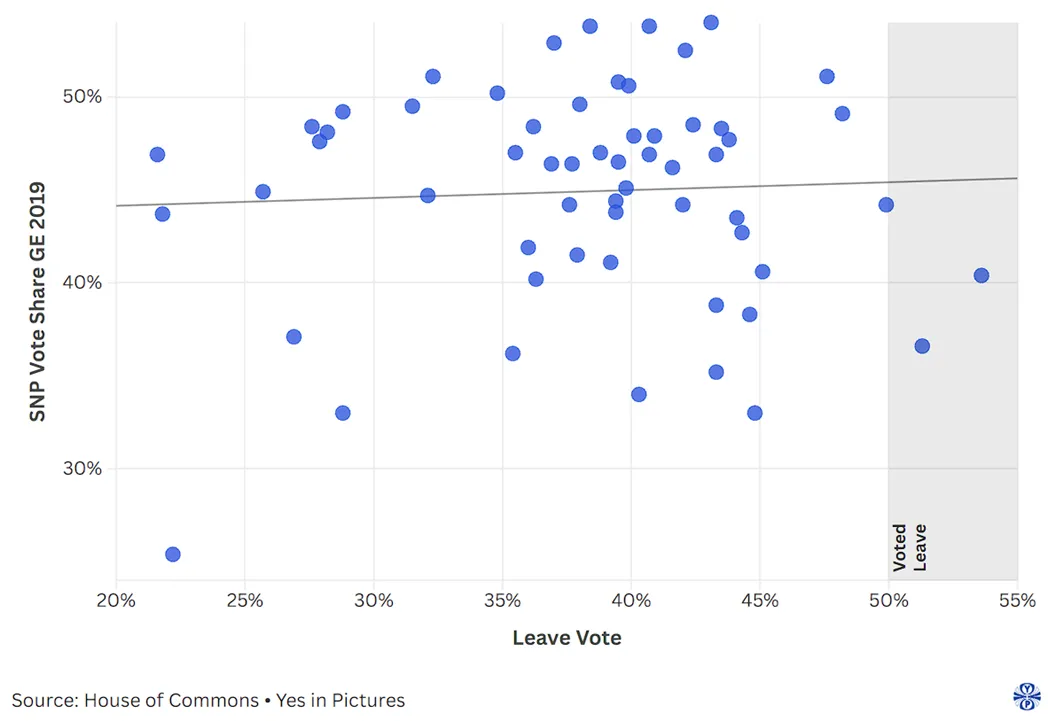
Leave a Reply